I am pretty layman to Perl, never used it ...but now I want to use it.
Here is what I did:
http://www.activestate.com/activeperl/downloads
I installed universal version - 5.12.4.1205
To test my program is working, I used the following small program :
dnacon.plx
#i/Perl64/bin/perl -w
#Example 1-1 Concatenating DNA
$DNA1 = 'ATTTGGTAAAATGTATA'
$DNA2 = 'TTTTGGGTTTGAAAT'
print "Here are two DNA fragments: \n\n"
print $DNA1, "\n\n"
print $DNA2, "\n\n"
$DNA3 = "$DNA1$$DNA2"
print "$DNA3\n\n
When I try to execute it the following is command prompt with errors.

Sorry for too basic question...
EDTIS:
When I just type dnacon.plx, it is seems that it is working, but with error !!!
c:\myperllessions>dnacon.plx
Scalar found where operator expected at C:\myperllessions\dnacon.plx line 5, nea
r "$DNA2"
(Missing semicolon on previous line?)
syntax error at C:\myperllessions\dnacon.plx line 5, near "$DNA2 "
Execution of C:\myperllessions\dnacon.plx aborted due to compilation errors.
Am I good to go ??? What could be the error ...compilation errors ????
Edits:
I am using the following now : is this correct ?
#i/Perl64/bin -w
Edits:
I changed my script to following:
#i/Perl64/bin -w
#Example 1-1 Concatenating DNA
use strict;
use warnings;
$DNA1 = 'ATTTGGTAAAATGTATA';
$DNA2 = 'TTTTGGGTTTGAAAT';
print "Here are two DNA fragments: \n\n";
print $DNA1, "\n\n";
print $DNA2, "\n\n";
$DNA3 = "$DNA1$$DNA2";
print "$DNA3\n\n";
I got the following error:
c:\myperllessions>dnacon.plx
Global symbol "$DNA1" requires explicit package name at C:\myperllessions\dnacon
.plx line 5.
Global symbol "$DNA2" requires explicit package name at C:\myperllessions\dnacon
.plx line 6.
Global symbol "$DNA1" requires explicit package name at C:\myperllessions\dnacon
.plx line 9.
Global symbol "$DNA2" requires explicit package name at C:\myperllessions\dnacon
.plx line 10.
Global symbol "$DNA3" requires explicit package name at C:\myperllessions\dnacon
.plx line 12.
Global symbol "$DNA1" requires explicit package name at C:\myperllessions\dnacon
.plx line 12.
Global symbol "$DNA2" requires explicit package name at C:\myperllessions\dnacon
.plx line 12.
Global symbol "$DNA3" requires explicit package name at C:\myperllessions\dnacon
.plx line 13.
Execution of C:\myperllessions\dnacon.plx aborted due to compilation errors.
Is my problem now with programming knowledge or something to do with installation ?????